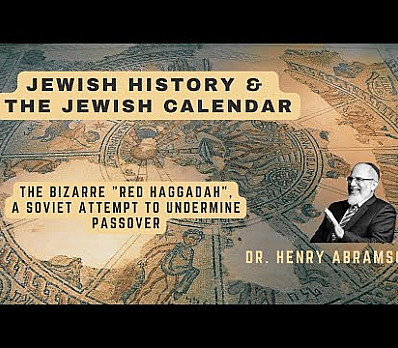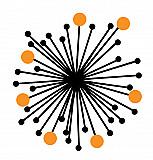Marxist Four Questions
The traditional four questions ask about the symbols of the seder: why do we eat matzah, why do we eat bitter herbs, why do we lean. But these are not all the symbols we can inquire about.
1. On all other nights we each eat off our own plate. Why on this night do we have one communal seder plate?
2. On all other nights we talk freely at the table. Why on this night do we have a discussion led by the haggadah?
3. On all other nights we eat alone, or with immediate family. Why on this night do we eat with a community?
4. On all other nights we tell stories from our day. Why on this night do we tell stories from an ancient, mythical past?
And the answers:
1. The seder plate: The original Seder had a definite Greco-Roman and Middle Eastern flavor, most notably a Greek style of dining with the participants actually reclining on low couches, pillows, or carpets around a central location. The various Seder items were placed on several low tables, which were carried in and out of the room at designated points in the ceremony and placed in front of the Seder leader. This practice is maintained today by many Yemenites and other Eastern Jews. A problem emerged in Europe, however, where during the early medieval period the practice developed to dine around a single large table while seated upright in chairs. At first, instead of bringing in and out the small tables, the various Seder items were merely arranged in a large wicker basket (around 1000 CE) and then later on a large platter, which could be moved at appropriate times. Eventually, craftsmen created a special plate (ke’arah) to hold the traditional foods. Whereas the original moveable tables contained all of the items to be consumed at the Seder, this was impractical for the relatively small Seder plate. Therefore, the custom developed among Sephardim and Ashkenazim (but not Mizrachim) of only putting a symbolic amount of food on the Seder plate and separately serving the bulk of it. In the 16th century, Italian Jews and Sephardim began making artistic Seder plates from brass, porcelain, and wood, a practice later adopted by Ashkenazim as well.
2. Haggadah: The word Haggadah comes from the Torah command - "And you shall tell ( v'Higadeta ) your children on that day..." It is believed that the obligation to tell the story of the Exodus was observed by Jews' ancestors ever since the actual Exodus itself. The scriptural command (Exodus 13:8) to tell the story of the exodus to our children is interpreted as a positive commandment. The creation of the haggadah happened over hundreds of years, with different components of ritual and story telling added by different scholars. We use the haggadah as a guide to the stories of our past as well as revaluing the symbols and traditions of Passover to be relevant to us in our time. We don't believe in any supernatural or external power to ourselves, so the power of the seder is what it evokes in us, not gathering mitzvah points to be tabulated in the afterlife.
3. Community: The Exodus from Egypt is the first experience of the Israelites as a distinct people from those around them. Interestingly, not only the "pure" Israelites, those descended from Joseph, came out of Egypt but an assorted group of people captured by war or imperial expansion who were inspired by the revolutionary fervor and decided to join in the revolt. The story of the exodus has been inspirational throughout the generations and for many more people than just the Jews! We want to invite as many people as possible to share in our vision of liberation so we can act collectively to bring about our freedom.
4. Ancient past: We view the stories of the Torah not as literal truth or lived history, but as mythical stories that our ancestors created to explain their origins as a people. Still, these stories have incredibly powerful messages that Jews have studied and revalued throughout the centuries. In our lives we often talk about what is happening here and now, and we live with our heads in the present and future, but we rarely get a chance to suspend our thoughts in our current time and look far back into the past. By reading and discussing ancient mythic stories we can learn about the societies of our ancestors and their worldview, and we can also gain insight into the universalities of human experience that have carried through subsequent modes of production. We see that the struggle between rich and poor, worker and owner is the same struggle we face today, and just as our ancestors had to escape and transform their society, so too must we.
Sources
https://www.emunah.org/magazine_detail.php?id=101
http://www.myjewishlearning.com/holidays/Jewish_Holidays/Passover/The_Seder.shtml
Inspired to create
your own Haggadah?
Make your own Haggadah and share with other Seder lovers around the world
Have an idea
for a clip?
People like you bring their creativity to Haggadot.com when they share their ideas in a clip
Support Us
with your donation
Help us build moments of meaning and connection through
home-based Jewish rituals.
OUR TOP CONTRIBUTORS
Passover Guide
Hosting your first Passover Seder? Not sure what food to serve? Curious to
know more about the holiday? Explore our Passover 101 Guide for answers
to all of your questions.






















